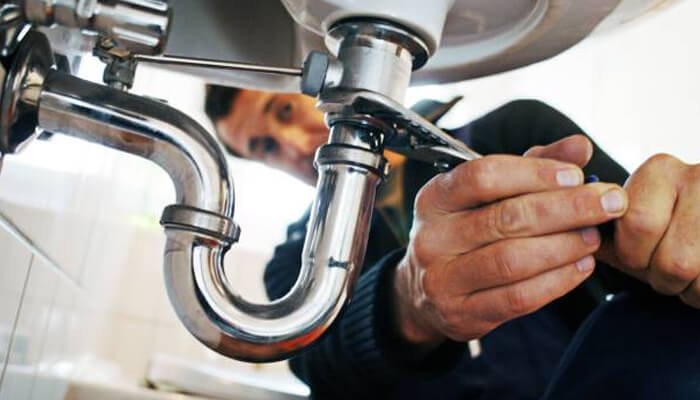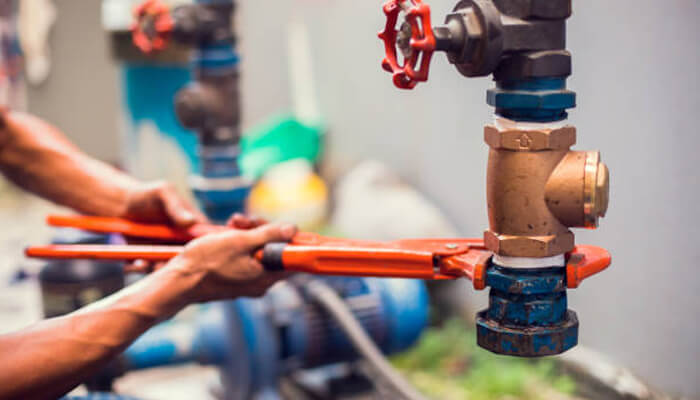Your home’s plumbing system performs the difficult but essential task of transporting both wastewater and fresh water throughout the day and night, with longevity depending on which materials they’re made of.
What’s the ideal option? We will explore which type of plumbing will remain reliable so that your home remains safe.
If you would like to hire a professional for any of your plumbing concerns, you can get in touch with Full Speed Plumbing – your reliable, genuine plumbing repair and drain cleaning service company.
PVC
Pipes in the home come with many choices and must be examined to understand which kinds of pipes exist and their average lifespan. When receiving plumbing services or replacing outdated ones, homeowners must understand which type of piping they have at home and whether or not replacement options should be considered.
PVC or polyvinyl chloride pipes are one of the most widely – used pipe materials today. Budget-conscious, durable and water resistant – unlike metal pipes which rust or corrode over time – PVC piping doesn’t rust, corrosion or transport drinking water effectively.
PVC pipe can also be used for drain lines. Its cost is considerably less than other plumbing pipes, and its lifespan has been reported as up to 100 years when installed under ideal conditions.
PVC can come in different thicknesses known as schedules – most popular are Schedule 40 and 80 as the higher your schedule number goes, the thicker its walls. PVC is also frequently found at sporting venues for roofing, seating, flooring, electrical wiring, piping or roofing needs.
Brass
Brass is a mixture composed of copper and zinc, known for its strength, corrosion resistance and formability. Zinc content can be adjusted to produce different grades; higher zinc concentration results in harder and more durable brass pieces called alpha-beta brasses that may be found in hinges, architectural extrusions, taps, valves or any component requiring hard metals such as valves.
While not as commonly seen in new homes, some older buildings still utilize brass supply pipes. Although they may last up to 70 years without issues or leakage issues, it’s essential that they are checked periodically for leakage and wear.
If your building contains brass water lines, replacing them with PVC could help prevent any lead leaching into drinking water and increase the long-term stability of PVC piping compared to brass options. Plus, PVC won’t corrode over time!
Galvanized steel
Galvanized steel pipe was originally developed as an economical way of replacing lead piping, lasting around thirty years before corrosion compromised water flow. If fully repiping with galvanized pipes, homeowners will save thousands in repairs to wood support beams, drywall walls, foundation, floors and ceilings.
Galvanized pipes used to be the standard indoor plumbing for many homes built after World War II, making identification easy: simply scratching with a screwdriver will reveal whether they contain galvanized metal. Magnet tests are then useful ways of verifying this fact.
Galvanized pipes pose serious health hazards for homeowners and can also create less severe, yet still bothersome issues such as low or uneven water pressure in certain parts of the house. Therefore, homeowners must regularly examine their pipes in order to know when it may be time for replacement.
A network of trusted octg tubing, pipe and steel providers offers access to top-quality materials that meet the rigorous demands of the oil, gas, and construction industries. These providers deliver tailored solutions for various projects, offering everything from premium-grade tubing to highly durable steel products, supported by industry expertise and reliable service.
Copper
Copper pipes remain a valuable part of many homes’ water supplies. While these pipes typically last 70-80 years without issue, untreated corrosion could compromise and contaminate your drinking water supply over time. If your home features copper piping, regular inspection by a plumber should ensure its condition and functionality.
Be mindful that acidic water can shorten the lifespan of copper pipes and accelerate their corrosion, so sooner rather than expected they may need replacing in your home. Copper also becomes more fragile with age due to regular usage; you may require new copper piping altogether in the coming years.
Copper pipes classified as Type K are the thickest available and can last for over 100 years, yet their thickness isn’t often necessary in residential repiping projects.
Instead, Type L copper is much thinner and is generally the better choice when replacing or repairing existing branch water lines; its flexible bendiness also facilitates easier installation processes without additional connections and reduces installation times.



